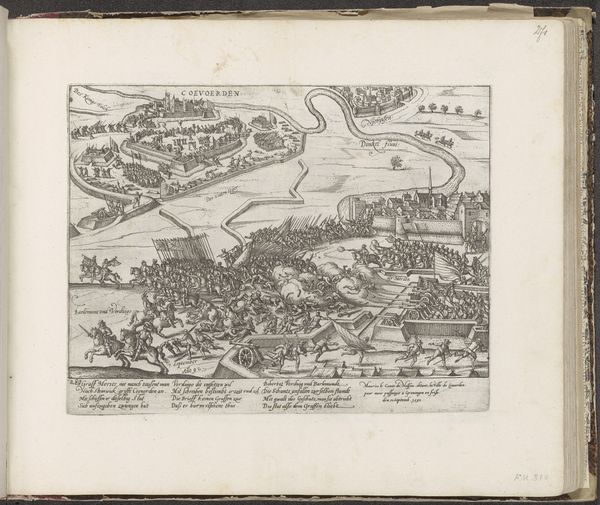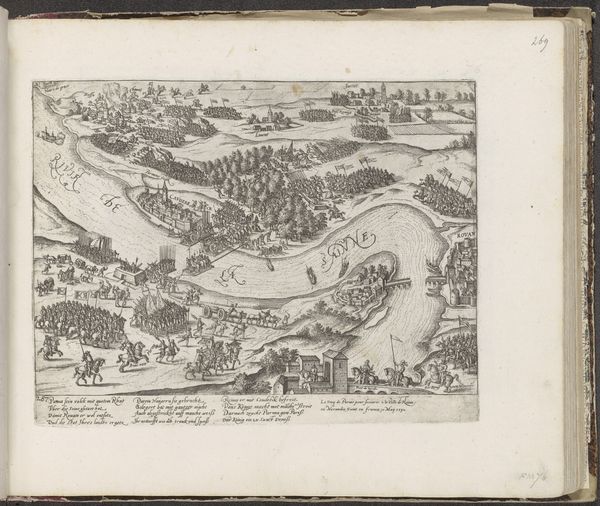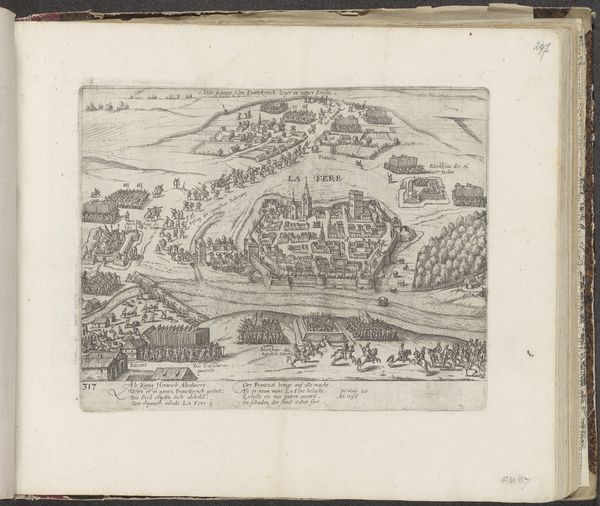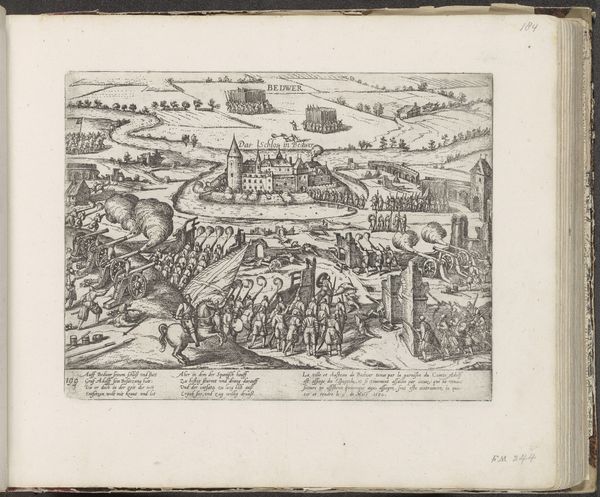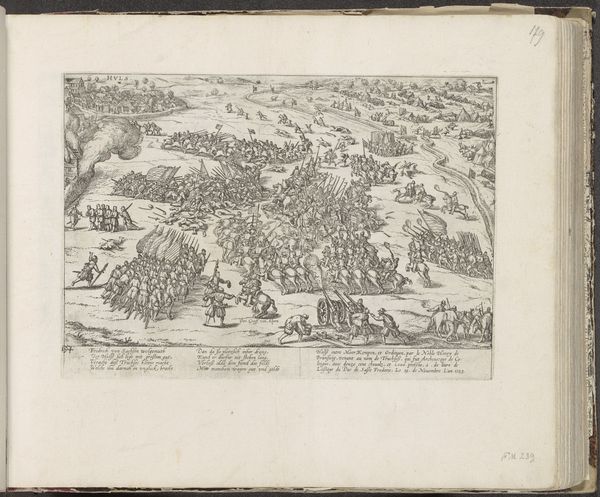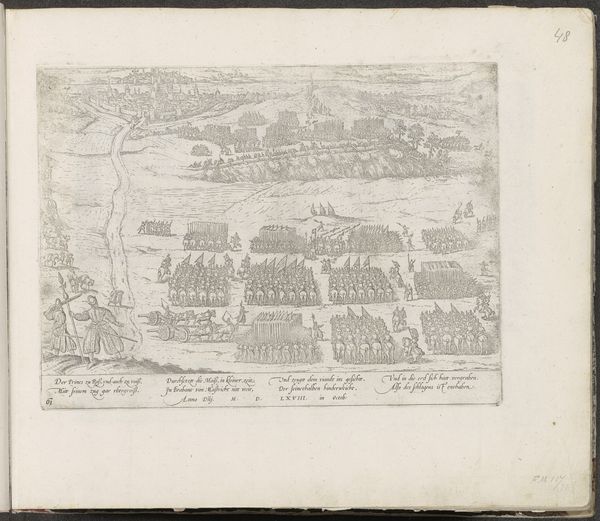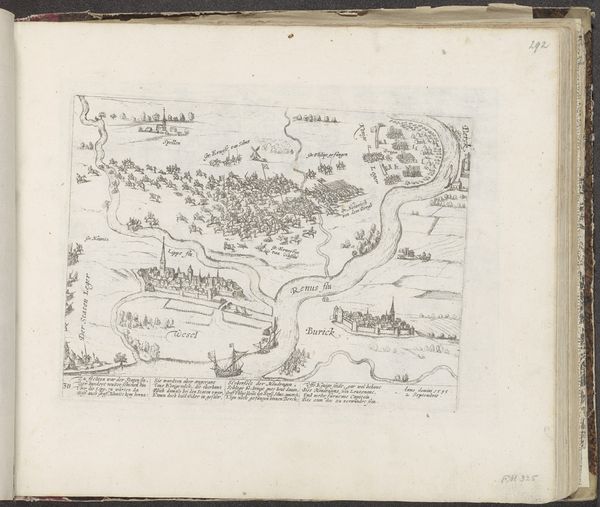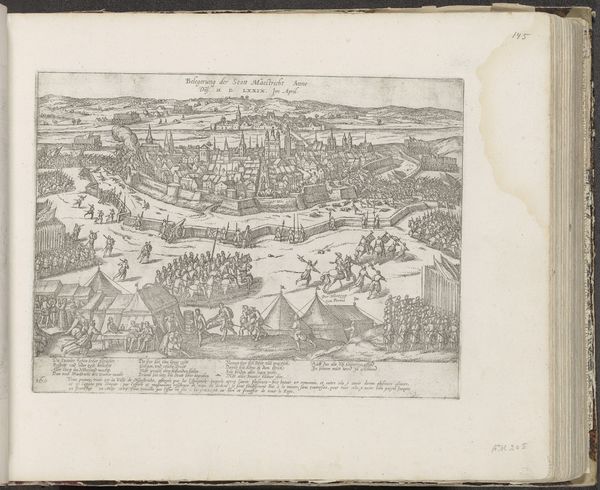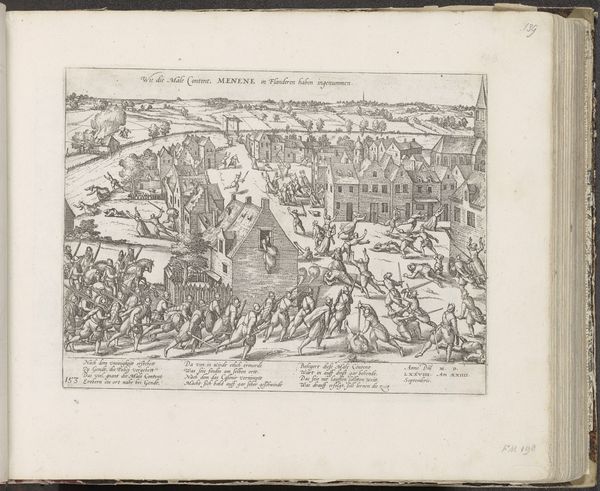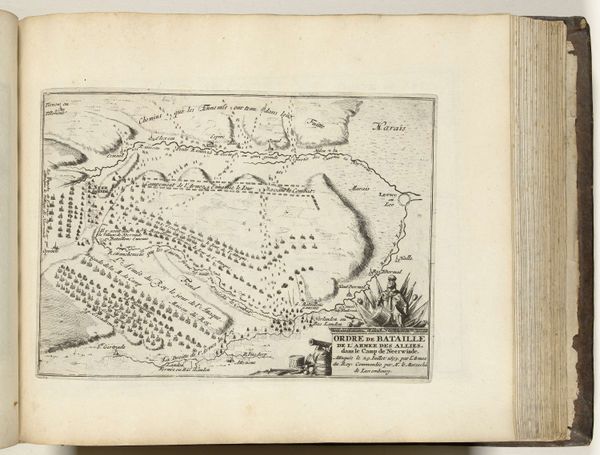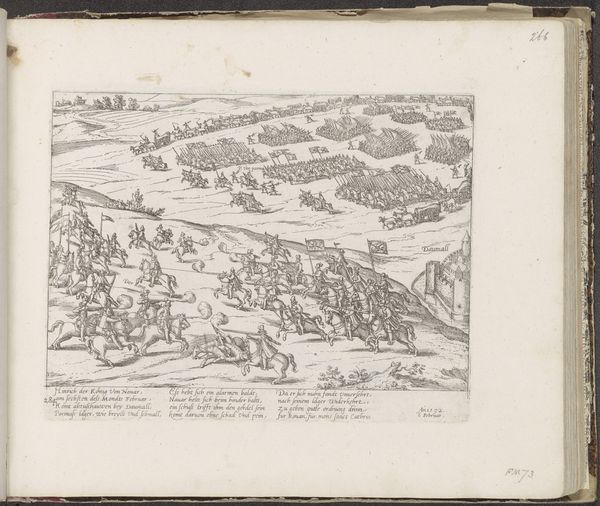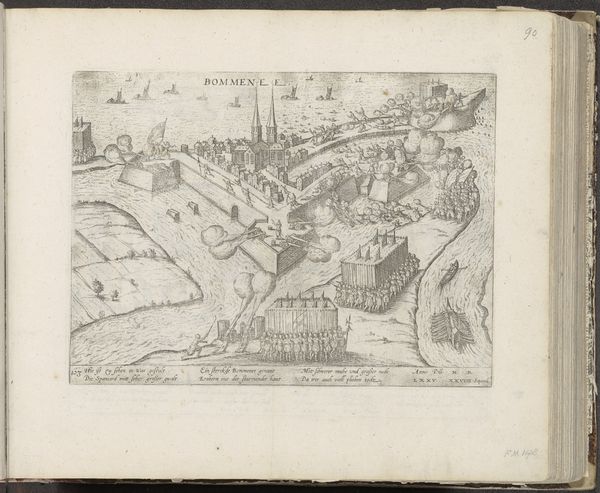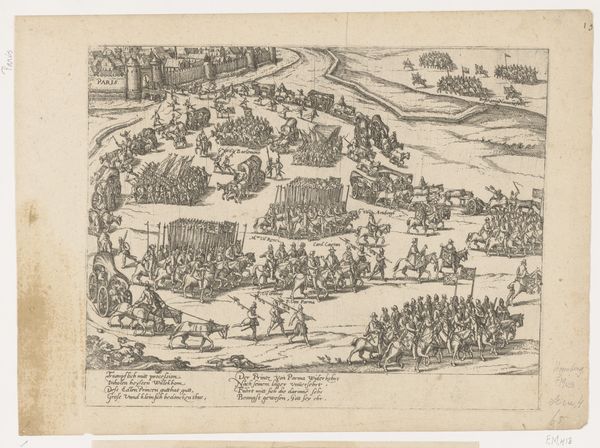
print, engraving
#
medieval
# print
#
landscape
#
history-painting
#
engraving
Dimensions: height 213 mm, width 293 mm
Copyright: Rijks Museum: Open Domain
Curator: Let's turn our attention to this engraving, "Bergen belegerd door Alva, 1572," dating from around 1574 to 1578. It's attributed to Frans Hogenberg and held here at the Rijksmuseum. An intense historical record, wouldn't you agree? Editor: Intense is one word for it! Chaotic is another. It’s like peering into a snow globe of tiny, angry figures. I’m immediately struck by the sheer density of detail. It’s almost overwhelming, but also captivating in its own way. Curator: Precisely! Hogenberg captured a pivotal moment in the Eighty Years' War—the siege of Bergen by the Duke of Alva. It’s history rendered with almost documentary precision. Notice how the city itself is depicted—almost as an objective itself, with forces converging upon it from two directions? Editor: It's less a landscape, and more a crowded theatre stage. These masses of soldiers, the puffed clouds of battle—it all feels very staged, as if the real grit of war has been glossed over in favour of drama. Which I imagine, it partly was... I suppose the intent isn't necessarily photo-realism but perhaps propagandistic? Curator: Certainly, propaganda was at play. Hogenberg’s prints were often circulated as news illustrations, shaping public opinion regarding the conflict with the Spanish. These images contributed to forming collective memories, or I suppose you can say, reinforcing Dutch national identity in response to foreign governance. Editor: Thinking about it like that definitely makes the artist feel like a spin doctor, reporting for duty! Still, you can't deny the impressive skill of the printmaking, creating those masses and masses of detail, or even its artistic charm for that matter, despite depicting warfare... So, there’s both information and visual pleasure at play, as well as an unmistakable sense of political engagement, that is so prevalent at the time. Curator: Agreed. The layering of information is really important. There’s a story embedded in every line and form that speaks to its place, time, and context of production. These detailed renderings allow one to understand both literal battles, and symbolic ones, shaping our sense of the past through art. Editor: Yeah. Now I'm just feeling grateful that Hogenberg documented it so fastidiously! I'm definitely more impressed now, the deeper you unravel its story, the more rich its overall impact turns out to be!
Comments
No comments
Be the first to comment and join the conversation on the ultimate creative platform.
